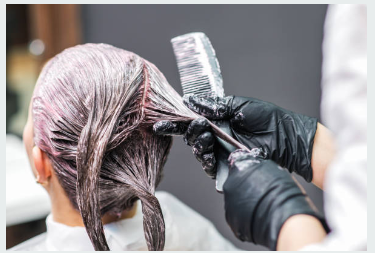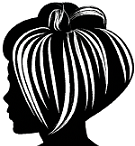Hair bleaching has become increasingly popular as a way to achieve vibrant and dramatic hair transformations. If you’re considering bleaching your hair, you may be wondering how long to leave the bleach in for optimal results. In this article, we will delve into the topic of how long to leave bleach in hair when using a 40-volume developer.
Whether you’re a seasoned DIY enthusiast or a first-time bleacher, understanding the process and following proper guidelines is essential for achieving the desired outcome without causing excessive damage to your hair.
Understanding Hair Bleaching

What is hair bleaching?
Hair bleaching is a chemical process that lightens the natural color of your hair. It involves the use of a hair bleach product, typically containing hydrogen peroxide, which helps break down the melanin pigment in the hair shaft. By reducing the melanin, hair can be lightened to varying degrees, depending on the desired result.
How does hair bleach work?
Hair bleach contains an alkaline agent, such as ammonia or an ammonia substitute, which helps to open up the hair cuticle. Once the cuticle is lifted, the bleach can penetrate the hair shaft and break down the melanin pigments. This process is what allows the hair to be lightened.
Different Volumes of Hair Bleach
What is a 40-volume hair bleach?
A 40-volume hair bleach, also referred to as a 12% developer, is one of the stronger options available. It contains a higher concentration of hydrogen peroxide, which allows for more significant lightening. However, it is important to note that with increased lightning power comes an increased risk of damage to the hair.
Comparing 40 volume bleach with other volumes
Hair bleach is available in various volumes, ranging from 10 to 40. The higher the volume, the stronger the bleach and the quicker it can lighten the hair. However, higher-volume bleaches also have a greater potential for causing damage. It’s essential to choose the volume of bleach that aligns with your hair’s condition and your desired level of lightness.
How Long to Leave 40 Volume Bleach in Hair
Factors to consider
The duration for which you should leave 40-volume bleach in your hair depends on several factors. These include your starting hair color, hair type, hair health, and the desired level of lightening. It is crucial to assess these factors before determining the appropriate time to leave the bleach in your hair.
General guidelines for leaving bleach in hair
As a general guideline, leaving 40-volume bleach in your hair for too long can increase the risk of hair damage, such as breakage and dryness. It is recommended to follow the instructions provided with the bleach product and perform a strand test beforehand to gauge the lightning effect and the time it takes to achieve the desired result.
Typically, leaving 40-volume bleach in your hair for around 30 to 45 minutes is sufficient to achieve significant lightning results. However, it is essential to monitor the bleaching process closely and check your hair regularly to avoid over-processing or damage.
Effects of leaving 40 volume bleach in hair for too long
Leaving 40-volume bleach in your hair beyond the recommended time can lead to adverse effects. These include excessive damage, hair breakage, scalp irritation, and even hair loss. Over-bleaching can weaken the hair shaft, making it more prone to damage and resulting in a brittle and unhealthy appearance.
To minimize the risk of damage, it is crucial to follow the recommended guidelines and closely monitor the bleaching process. If you are unsure about the appropriate time or if you have sensitive or damaged hair, it is advisable to seek professional assistance from a hairstylist or colorist.
Step-by-Step Guide to Bleaching Hair with 40-Volume Bleach

Now that we have discussed the considerations and guidelines, let’s explore a step-by-step guide for safely bleaching your hair using 40-volume bleach.
1. Preparing your hair
Before starting the bleaching process, it is essential to prepare your hair to minimize damage. This involves ensuring your hair is in good condition and free from any chemical treatments, such as relaxers or perms. It is recommended to deep condition your hair regularly leading up to the bleaching process to improve its strength and resilience.
2. Mixing and applying the bleach
Follow the instructions provided with your 40-volume bleach product to prepare the bleach mixture. It is crucial to wear gloves and protect your clothing and the surrounding area to avoid any accidental spills or staining. Section your hair and apply the bleach mixture evenly, starting from the ends and working your way up to the roots.
3. Monitoring the bleaching process
Once the bleach is applied, it’s important to monitor the process closely. Check your hair regularly to assess the lightening effect and determine if the desired level of lightness has been achieved. It’s recommended to avoid excessive heat sources, such as hairdryers or direct sunlight, as they can intensify the bleaching process and increase the risk of damage.
4. Removing the bleach
When your hair has reached the desired level of lightness, it’s time to remove the bleach. Rinse your hair thoroughly with lukewarm water until the water runs clear. Follow up with a gentle shampoo and conditioner specifically formulated for color-treated or bleached hair to restore moisture and nourishment.
Aftercare and Maintenance Hair bleaching
Caring for bleached hair is essential to maintain its health and minimize damage. Here are some aftercare tips and recommended products for maintaining bleached hair:
- Use a sulfate-free shampoo and conditioner to avoid stripping the hair of its natural oils.
- Apply a deep conditioning treatment regularly to restore moisture and improve the hair’s elasticity.
- Minimize heat styling and use heat-protectant products when necessary.
- Protect your hair from
- the sun’s UV rays by wearing a hat or using hair products with UV protection.
- Avoid over-processing your hair by spacing out bleach touch-ups and giving your hair time to recover between treatments.
- Trim your hair regularly to remove any split ends and maintain its overall health.
- Consider incorporating hair masks or oils into your hair care routine to provide extra nourishment and hydration.
- By following these aftercare tips and using appropriate products, you can help preserve the health and appearance of your bleached hair.
Conclusion about Hair bleaching
Bleaching hair with 40-volume bleach can be an effective way to achieve significant lightening results. However, it is crucial to approach the process with caution and follow proper guidelines to minimize the risk of damage. Factors such as hair type, hair health, and desired lightning level should be considered when determining how long to leave the bleach in your hair.
Remember to always perform a strand test and closely monitor the bleaching process to ensure optimal results. If you are unsure or have concerns about bleaching your hair, it is recommended to consult a professional hairstylist or colorist who can provide expert guidance and assistance.
Bleaching your hair can be a transformative experience, but it’s important to prioritize the health and integrity of your hair throughout the process. .
FAQs
Yes, 40-volume bleach can be used on dark hair, but it is important to consider the potential damage it can cause and consult a professional if needed.
The frequency of bleaching depends on your hair’s condition and the desired lighting level. It is generally recommended to space out bleaching sessions to allow your hair time to recover.
Toning is often recommended after bleaching to neutralize any unwanted brassy or yellow tones. However, the need for toning can vary depending on your desired hair color and the lighting results achieved.

